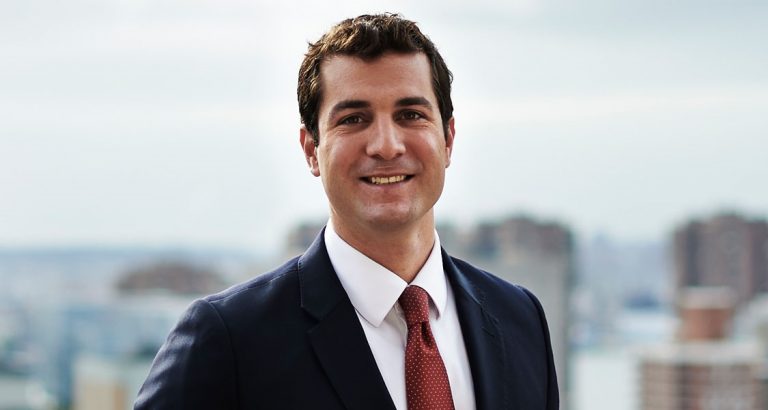
Securing an undergraduate degree (B.A., Natural Sciences) from Johns Hopkins University before going on to law school is not a typical path for many sports lawyers. But then there is nothing typical about Rob Sanzillo.
The initial plan for Sanzillo, now General Counsel and Senior Vice President of Lacrosse Operations at Premier Lacrosse League, was to pursue a career in medicine. But Sanzillo also loved baseball. So, to his parent’s chagrin, he pursued a career in sports law.
After securing his JD from Fordham University School of Law, Sanzillo found the ideal staging ground for his career, joining Herrick Feinstein as an associate. The rest is history. Sanzillo’s unusual path and perspective made him a good candidate for the interview below.
Question: Tell us about your role at the Premier Lacrosse League and what your responsibilities are?
Answer: My current title is General Counsel and Senior Vice President of Lacrosse Operations, which means I oversee two distinct sides of the business. As General Counsel, I head our small, but growing, legal department and reach across our company to provide legal, business, and strategic guidance to our various department verticals. The PLL maintains a true single-entity corporate structure, so the league’s entire operations run through our front office. As the SVP of Lacrosse Operations, I oversee anyone that steps on the field during a season, which includes the athletes and coaches on our eight teams, our officials, and our medical team.
Q: What area of law do you handle in-house and what areas do you outsource?
A: As a company that is still in our infancy, our legal budget is nowhere near that of the major sports leagues. My goal is to keep things in-house, but to have enough self-awareness to know when I need outside expertise. For example, we have outside counsel for our financings, media rights agreements, intellectual property, and immigration work. Much of the other work stays in-house, with some exceptions for large, multi-year sponsorship deals and complicated employment matters.
Q: How did your work at Herrick prepare you for this?
A: Herrick was the perfect place to start my legal career. Herrick’s sports practice rivals that of any New York firm, and gave me exposure to many of the commercial agreements that I work on at the PLL. I am incredibly thankful for the education that Herrick provided me, and for the relationships that continue to this day.
Q: What are the biggest differences between being a GC and an attorney in a firm?
A: When I accepted the role at the PLL, a mentor told me the biggest difference between being a General Counsel and an attorney in a firm is that at a law firm your knowledge has to be “an inch wide and a mile deep,” but as a General Counsel, your knowledge will have to be “a mile wide and only an inch deep.” I find that rings true.
Legal work at the PLL changes by the day. Our sponsorship team has different questions than our operations team, which has different questions than our social media team, which has different questions than our athletes and coaches. No two meetings are the same, which keeps my days busy but interesting. It has been both challenging and rewarding to be relied upon by so many unique groups to help problem solve and build a company.
Q: Where does concussion rank as far as being a big issue from a risk management standpoint and why?
A: The threat of concussion and CTE comes up for us every year as we renew our insurance and workers’ compensation coverage. Lacrosse is a helmet sport, so everyone assumes the helmets are there to protect the athletes during player-on-player collisions like in football. But the helmets are more there to protect the athletes from being hit with the ball or a stick, rather than cushion them from a big hit.
That said, we do take the safety and care of our athletes incredibly seriously. We have a 20-page Brain Health Policy, and conduct player education and baseline testing at training camp each season. Any player that exhibits symptoms is immediately checked by the medical team (Chelsea Ortega, from Evolution PT) and by our brain health partner (Kutcher Clinic for Sports Neurology). Additionally, we have implemented new rules to prevent big hits and hits on defenseless players. Concussions will always be inherent in any contact sport, but we continue to be diligent in protecting our athletes.
Q: Tell us about your career in law came about, especially in light of getting your undergrad in Biology at Johns Hopkins? It would seem like an unlikely career path.
A: Did my parents submit this question?
The plan for me was always medical school. Growing up, I always gravitated toward the STEM courses and found myself most energized when trying to understand how and why the world works the way it does. This is not another one of those stories where the next line is “then I took organic chemistry and knew that I didn’t want to be a doctor.” Rather, I credit Hopkins for being the first time that I was able to explore new fields and I ended up taking several business classes.
I was lucky to have the opportunity to play professional baseball for a short time. From simple observation, whether on the team side, the player side, or a sponsorship side, it became evident that lawyers were an integral part of getting things done in the sports world. When I decided that I wanted to make a run at working in sports, getting a law degree seemed like the logical next step.

